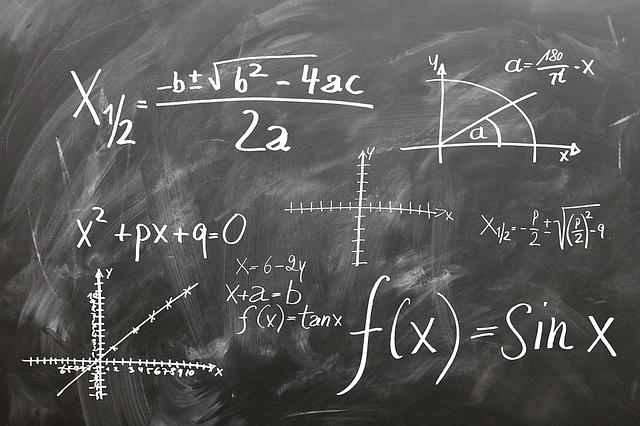Mathematics can be broadly divided into three significant branches, namely, Arithmetic, Algebra, and Geometry. Algebra is considered to be one of the oldest components in the history of mathematics. Algebra deals with the study of symbols, exponentials, known and unknown variables, and equations.
Just as sentences describe relationships between specific words, equations describe relationships between variables in algebra.
Algebra is a branch of mathematics dealing with symbols and the rules for manipulating those symbols. In elementary algebra, those symbols (today written in Latin and Greek letters) represent quantities without fixed values, known as variables.
Check out this comprehensive guide on algebra.

Learn About The History Of Algebra
Muhammad ibn Musa al-Khwarizmi is known as the "Father of algebra." He was a Persian mathematician who wrote a book named Kitab Al Muhtasar fi Hisab Al Gabr Wa I Muqabala in Arabic, later translated into English as "The Compendious Book on Calculation by Completion and Balancing," from which the word algebra was derived. The book provides a systematic solution for linear and quadratic equations.
According to Al-Khwarizmi, the word algebra is described as the 'reduction' and 'balancing' of subtracted terms that transposition to other sides of the equation (cancellation of like terms).
Looking for a maths teacher in India, the search ends with Superprof. Algebra is the basic foundation of mathematics and once you gain mastery in it you can understand other concepts of the subjects in a more precise manner.

Branches of Algebra
Algebra follows various rules to perform arithmetic operations. The rules are used to make sense of data sets involving two or more variables. It is used to analyze many things around us. You probably use algebraic concepts without even realizing it. Algebra is divided into different branches such as elementary algebra, advanced algebra, abstract algebra, linear algebra, and commutative algebra.
Find assistance in algebra with private Maths tuition near you.
Elementary Algebra
Elementary Algebra covers the traditional topics studied in a modern elementary algebra course. Arithmetic includes numbers and mathematical operations like +, -, x, ÷. But in algebra, the numbers are often represented by symbols and are called variables such as x, a, n, and y. It also allows the common formulation of the laws of arithmetic, such as, a + b = b + a.
Elementary algebra is the first step that systematically explores all the properties of a system of real numbers. The concepts of elementary algebra include variables, evaluating expressions and equations, properties of equalities and inequalities, solving the algebraic equations and linear equations having one or two variables, etc.
Advanced Algebra
This is the intermediate level of Algebra. The advanced algebra level involves a higher level of equations than pre-algebra and has concepts such as:
- Equations with inequalities
- Matrices
- Solving system of linear equations
- Graphing of functions and linear equations
- Conic sections
- Polynomial Equation
- Quadratic Functions with inequalities
- Polynomials and expressions with radicals
- Sequences and series
- Rational expressions
- Trigonometry
- Discrete mathematics and probability
Abstract Algebra
Abstract algebra is one of the divisions in algebra which helps discover the truths relating to algebraic systems independent of the specific nature of some operations. These operations, in specific cases, have certain properties. Hence, this branch of mathematics is called abstract algebra. Abstract algebra deals with algebraic structures like fields, groups, modules, rings, lattices, vector spaces, etc. The various concepts of abstract algebra are discussed below.
Sets
Sets are defined as the collection of objects that are determined by some specific property for a set. For example, a set of all the 2×2 matrices, the set of two-dimensional vectors present in the plane, and different forms of finite groups.
Binary Operations
When the concept of addition is conceptualized, it gives binary operations. The concept of all binary operations will be meaningless without a set.
Identity Element
The numbers 0 and 1 are conceptualized to give the idea of an identity element for a specific operation. Here, 0 is called the identity element for the addition operation, whereas 1 is called the identity element for the multiplication operation.
Discover the all-important variables in algebra as knowing the basics of algebra is essential in understanding and improving.

Inverse Elements
The idea of inverse elements comes up with a negative number. In addition, we write “-a” as the inverse of “a,” and for the multiplication, the inverse form is written as “a-1″.
Associativity
When integers are added, there is a property known as associativity in which the grouping up of numbers added does not affect the sum.
Linear Algebra
Linear algebra is a branch of algebra that applies to both applied and pure mathematics. It deals with the linear mappings between the vector spaces. It also deals with the study of planes and lines. It studies linear sets of equations with transformation properties and is used in almost all areas of Mathematics. The important topics covered in linear algebra are:
- Linear equations
- Vector Spaces
- Relations
- Matrices and matrix decomposition
- Relations and Computations
Commutative Algebra
Commutative algebra studies the commutative rings and their ideals. The algebraic number theory, as well as algebraic geometry, depends on commutative algebra. It includes rings of algebraic integers, polynomial rings, and so on. Many other branches of mathematics draw upon commutative algebra in different ways, such as differential topology, invariant theory, order theory, and general topology.
Find useful algebra resources online, use these resources to improve and enhance your knowledge of algebra basics.
Algebraic Operations
The terms are always categorized as like and unlike in each algebraic operation performed. The four basic algebraic operations are:
- Addition
- Subtraction
- Multiplication
- Division
Addition
The algebraic operation is an addition when two or more terms in an algebraic equation are separated by a plus sign (+). We always add the like terms and unlike terms separately as they are treated as two different quantities. Mathematically two different quantities cannot be added together.
Subtraction
The algebraic operation is subtraction when a minus sign separates two or more terms in any algebraic equation (-). Just as in the case of an addition, the terms are differentiated as like or unlike terms and then subtracted further.
Multiplication
When two or more terms in an algebraic equation are separated by a multiplication sign (×), the algebraic operation is multiplication. While multiplying the like terms or unlike terms, we use Laws of Exponents.
Division
When two or more terms in any algebraic equation are separated by a division sign (/), the algebraic operation performed is division. While dividing the like terms, the similar terms can be simplified, while in the case of unlike terms, the terms cannot be simplified any further easily.
You can learn more about all the functions in Algebra with maths online classes taken by certified Math teachers from all over India.
Basic Rules of Algebra

Commutative Rule of Addition
In algebra, the commutative rule of addition states that when two terms are added, the order of addition does not matter. The equation for the same is written as, (a + b) = (b + a). For example, (x3 + 2x) = (2x + x3)
Commutative Rule of Multiplication
The commutative rule of multiplication states that when two terms are multiplied, the order of multiplication does not matter. The equation for the same is written as, (a × b) = (b × a). For example:
(x4 - 2x) × 3x = 3x × (x4 - 2x).
LHS = (x4 - 2x) × 3x = (3x5 - 6x2)
RHS = 3x × (x4 - 2x) = (3x5 - 6x2)
Here, LHS = RHS, which proves that their values are equal.
Associative Rule of Addition
In algebra, the associative rule of addition states that when three or more terms are added, the order of addition does not matter. The equation for the same is written as a + (b + c) = (a + b) + c. For example, x5 + (3x2 + 2) = (x5 + 3x2) + 2
Learn how to analyze the basic rules and expressions in algebra.
Associative Rule of Multiplication
Similarly, the associative rule of multiplication states that when three or more terms are multiplied, the order of multiplication does not matter. The equation for the same is written as a × (b × c) = (a × b) × c. For example, x3 × (2x4 × x) = (x3 × 2x4) × x.
Distributive Rule of Multiplication
The distributive rule of multiplication states that when we multiply a number by the addition of two numbers, it results in the output which is the same as the sum of their products with the number individually. This is the distribution of multiplication over addition. The equation for the same is written as, a × (b + c) = (a × b) + (a × c). For example, x2 × (2x + 1) = (x2 × 2x) + (x2× 1).















